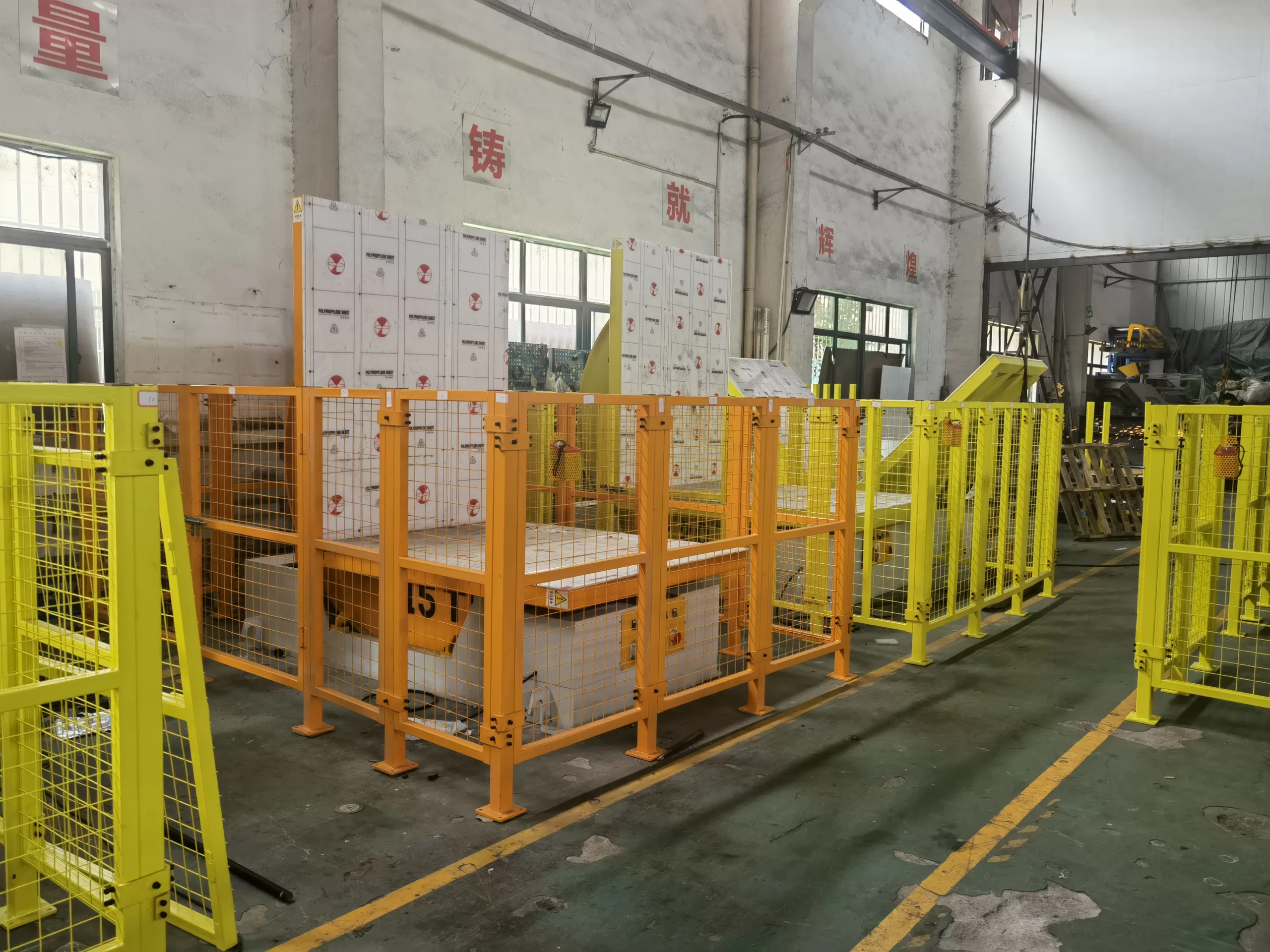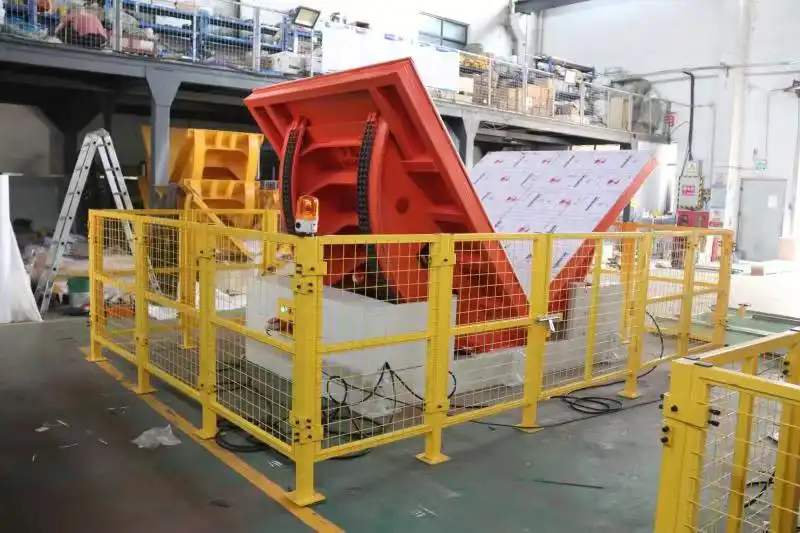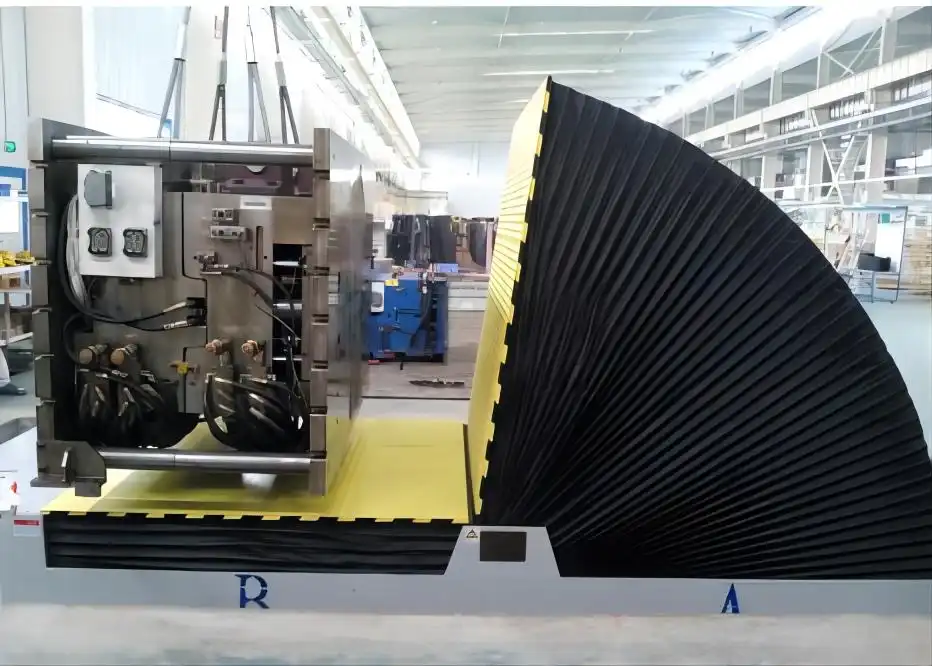Is Manual Mold Handling Still Draining Labor in Canadian Tool Shops?
Are you watching your skilled workers spend their valuable time on repetitive, physically demanding tasks? In many Canadian tool and die shops, the manual handling of heavy molds is a major operational bottleneck. This process is slow, inefficient, and poses a significant safety risk to your team. You know there has to be a better way, a method that protects your employees, speeds up production, and ultimately boosts your bottom line. The solution lies in embracing automation, turning a labor-draining problem into a source of competitive advantage.
Yes, for many Canadian tool shops, manual mold handling continues to be a significant drain on labor and resources. This reliance on manual processes directly leads to higher operational costs, an increased risk of workplace injuries, and a tangible loss of productivity. Shops that stick with outdated manual methods often find it difficult to compete with more automated, efficient operations, as they struggle with production bottlenecks and inconsistent workflow.

I see this issue in Canada, but this challenge is not unique to tool shops or to one country. In my years as an engineer and now as a factory owner, I’ve seen this same pattern across heavy industries all over the world. I talk to leaders like Javier Morales, a steel mill owner in Mexico, who faces similar pressures. Whether you are moving molds in Ontario or steel coils in Monterrey, the core problem is the same: manual handling is a hidden cost that eats away at your profits. It’s time to look at how modern solutions can solve this problem for good.
How Can Automation Overcome the Hidden Costs of Aging Equipment?
Your factory floor has equipment that has served you well for over 15 years. But now, it's starting to show its age. Breakdowns are becoming more frequent, and each time a machine goes down, it's not just the repair bill you have to worry about. You lose production hours, your schedule is thrown into chaos, and you risk disappointing your customers. This constant cycle of reactive maintenance is exhausting and expensive. Smart automation offers a way out, providing stability and predictability where there was once only uncertainty.
Automation directly counters the hidden costs of aging equipment by shifting you from a reactive to a proactive operational model. It introduces predictive maintenance capabilities through sensors and data analysis, which drastically reduces unexpected downtime. It also ensures consistent, repeatable performance, compensating for the wear and tear on older core machinery and reducing reliance on manual oversight that can lead to errors and further strain on the equipment.

The Real Price of a Breakdown
When a key piece of your production line fails, the direct cost of the repair part and the technician's time is just the tip of the iceberg. The true cost is much larger. Think about the lost output for every hour the line is stopped. For a steel mill producing hundreds of tons per hour, this number is huge. Then, there's the cost of idle labor; your team is on the clock but can't produce. If the delay impacts a customer shipment, you risk penalty clauses or, even worse, damage to your reputation. These indirect costs can easily be ten times the direct cost of the repair itself. Aging equipment makes these events more common. The bearings are older, the motors are less efficient, and the control systems are obsolete. Relying on manual workarounds to support this old machinery only adds another layer of unpredictability and risk.
Moving from Reactive to Predictive Operations
This is where modern automation, especially in end-of-line systems like packaging, creates a fundamental change. A new automated coil packing line isn't just a machine; it's an intelligent system. It is built with IoT (Internet of Things) sensors that constantly monitor critical components. These sensors track motor temperature, vibration, cycle counts, and material tension. All this data is fed into your central plant management system, or MES. Instead of waiting for a motor to burn out, the system alerts you that its temperature has been trending upward, suggesting it needs service before it fails. This is the shift from reactive ("It's broken, fix it!") to predictive ("It's going to break, let's schedule maintenance."). This approach is key to achieving goals like 95% equipment uptime because you control the maintenance schedule, not the other way around.
| Feature | Manual Support for Aging Equipment | Automated System Integration |
|---|---|---|
| Uptime | Low & Unpredictable (Below 80%) | High & Predictable (Targeting 95%+) |
| Maintenance | Reactive & Emergency-Based | Predictive & Scheduled |
| Data Availability | None / Manual Logs | Real-Time IoT Data Stream |
| Labor Cost | High (Constant Monitoring) | Low (Supervisory Role) |
| Safety | High Risk of Injury | Low Risk (Guarded System) |
Is Your Packaging Line Ready for the Demands of Digital Transformation?
Many industrial leaders I speak with are focused on digital transformation. They are investing in powerful software like Manufacturing Execution Systems (MES) to get a clear view of their entire operation. But there's a problem. They invest millions in this top-level software, but their factory floor is full of "data islands"—older machines that can't communicate. An old, non-networked packaging line is a black hole in your data strategy. You can’t achieve full production visualization if your end-of-line process is invisible. A truly smart factory requires every link in the chain to be connected.
A packaging line is ready for digital transformation when it is designed for seamless integration. This means it must have the capability to connect directly to your plant’s MES and ERP systems. It needs to be equipped with a full suite of IoT sensors to generate and transmit real-time, actionable data on performance metrics, material usage, and its own operational health. Only a connected line can provide the data needed for the comprehensive production visualization that leaders demand.

Defining a "Smart" Packaging Line
What makes a packaging line "smart"? It's not just about having a touchscreen. A smart line is built around a modern PLC (Programmable Logic Controller) that acts as the brain. This brain communicates with all parts of the machine—motors, sensors, safety guards—and also speaks the language of your factory network. This is usually done through industrial protocols like EtherNet/IP or PROFINET. It means your MES can directly ask the packaging line: "What is your status? How many coils have you wrapped? Did you have any errors in the last hour?" The operator uses an HMI (Human-Machine Interface) to run the machine, but the managers and planners get their data directly from the system, without needing to walk down to the floor and ask. This connectivity is the foundation of digitalization.
The Data That Drives Profitability
A smart packaging line generates a stream of valuable data that helps you achieve your most important goals. For a CEO like Javier, who wants to lower overall operating costs by 8%, this data is gold. For example, the system tracks the exact amount of wrapping film used for each coil. You can analyze this data to optimize wrapping programs and reduce material waste, directly lowering unit costs. It records every second of downtime and forces operators to select a reason from a predefined list. This helps you identify and solve recurring problems, pushing you closer to that 95% uptime target. It measures energy consumption, helping you track progress toward your goal of a 10% reduction in unit energy use. This isn't just data for the sake of data; it's information that empowers you to make smarter, more profitable decisions.
| Feature | Legacy Packaging Line | "Smart" Digitally-Ready Line |
|---|---|---|
| Data Output | Manual Count / None | Automated, Real-Time Data Stream |
| MES Integration | Not Possible / Very Difficult | Native (EtherNet/IP, PROFINET) |
| Remote Diagnostics | No | Yes, via Network Access |
| Performance Tracking | Manual Logs | Automatic OEE Calculation |
| Process Optimization | Trial and Error | Data-Driven Adjustments |
Can a Strategic Partner Do More Than Just Supply a Machine?
You've decided to invest in new equipment. You search online and find dozens of suppliers. Many of them can sell you a machine that meets your basic specifications. But what happens after the machine arrives at your factory? Who will ensure it integrates perfectly with your existing production line? Who will train your operators to use it effectively and safely? Who will be there to support you two, five, or ten years down the road? The reality is, buying a machine is just the first step. A transactional supplier who simply drops a box at your door is not a solution; they are a potential problem.
Yes, a true strategic partner delivers far more value than just a piece of equipment. They provide a total solution that encompasses the entire lifecycle of the investment. This partnership starts with in-depth consultation and custom design, moves through professional installation and commissioning, includes comprehensive operator training, and continues with reliable, long-term technical and maintenance support. Their goal is to ensure your investment generates maximum ROI and contributes to your long-term success.

The Dangers of a "Box-Dropper" Supplier
I have seen the negative consequences of choosing the wrong supplier many times. I remember a client in the steel industry who bought a new packing machine from a company that offered the lowest price. The machine was delivered, but the supplier offered no installation support. It was not designed to integrate with their conveyor system. The control systems were incompatible with their plant's network. That machine sat in a crate for six months while the client hired expensive local contractors to try and make it work. They lost six months of potential efficiency gains and spent thousands more than they had "saved" on the initial purchase. This is the classic pitfall of a "box-dropper." They are focused on the sale, not the outcome. They don't take the time to understand your unique operational environment, your goals, or your team.
The Strategic Partnership Model
At SHJLPACK, my philosophy is completely different, because I’ve been on both sides of the table. I know the pressures of running a factory. A strategic partnership is about shared success. It begins with a deep conversation to understand your specific challenges—your aging equipment, your need for digitalization, your cost reduction targets. Then, we design a solution, not just a machine. This means we plan the layout, the integration with your upstream and downstream equipment, and the data interface with your MES. We provide full support during installation and commissioning to ensure a smooth startup. But it doesn't end there. We train your operators and maintenance staff, empowering your team to take ownership. And we remain your partner for the long haul, offering technical support and advice as your needs evolve. This is how you ensure a return on your investment.
| Stage | Transactional "Box-Dropper" | Strategic Partner (SHJLPACK) |
|---|---|---|
| Pre-Sale | Sends Standard Catalog/Quote | On-site/Virtual Consultation, Custom Solution Design |
| Installation | Customer's Responsibility | Supervision, Commissioning, Integration Support |
| Post-Sale | Limited / E-mail Support Only | Operator & Maintenance Training, Phone/On-site Support |
| Long-Term | Sells Spare Parts | Proactive Maintenance Advice, Upgrade Pathways |
What’s the Real ROI of Upgrading Your End-of-Line Packaging System?
Making a significant capital investment in new equipment requires a solid business case. As a business owner, you need to be sure that the investment will pay for itself and deliver a strong return. It’s easy to look at the upfront cost of a new automated packaging line and hesitate. It's tempting to try and squeeze another year or two out of your old, paid-for equipment. But this perspective often ignores the massive, ongoing costs of not upgrading. The wasted labor, excess material consumption, production bottlenecks, and potential for product damage are all eating into your profit margin every single day.
The real ROI of upgrading an end-of-line packaging system extends far beyond the simple payback calculation. It is a composite of direct and indirect financial gains, including major savings from reassigning manual labor, reducing packaging material waste by 10-15%, slashing downtime associated with old equipment, and improving product quality by preventing shipping damage. These combined savings typically result in a full return on investment in under two years.

Looking Beyond the Price Tag
To understand the true ROI, you must calculate all the savings an automated system generates. First and foremost is labor. An automated coil packing line can often do the work of two or even three people per shift. In a 24/7 operation, that's a huge annual saving. Second is material savings. Modern wrappers have precise controls that apply the exact amount of film or paper needed, eliminating the overuse common in manual or semi-automatic processes. This can easily reduce your packaging material costs by over 10%. Third are the efficiency gains. Faster, more consistent cycle times mean higher throughput, allowing you to get more product out the door. Fourth is the reduction in product damage. A properly wrapped coil is protected from moisture and handling damage during shipping, reducing costly customer claims. Finally, modern systems are more energy-efficient, contributing directly to your energy reduction goals and lowering utility bills.
A Sample ROI Calculation
Let's look at a simplified, hypothetical example for a steel coil packing line.
- Initial Investment Cost: $200,000
- Labor Savings: Let's say the new line allows you to reassign two operators per shift. In a three-shift operation, that's six positions. If the fully-burdened cost of an operator is $50,000/year, that's a $300,000 annual labor saving.
- Material Savings: If your plant spends $400,000 per year on wrapping materials and the new system reduces that by 12%, that’s an additional $48,000 annual saving.
- Maintenance & Downtime Savings: Let's conservatively estimate that reducing breakdowns and improving efficiency saves $30,000 per year.
In this scenario, the total annual savings are $300,000 + $48,000 + $30,000 = $378,000. The payback period is the initial investment divided by the annual savings: $200,000 / $378,000 = 0.53 years, or just over six months.
| ROI Component | Calculation | Annual Value |
|---|---|---|
| Investment Cost | - | ($200,000) |
| Annual Labor Savings | 6 operators x $50,000/yr | +$300,000 |
| Annual Material Savings | $400,000 x 12% | +$48,000 |
| Annual Uptime/Maint. Savings | Conservative Estimate | +$30,000 |
| Total Annual Savings | Sum of Savings | $378,000 |
| Payback Period | Investment / Annual Savings | 6.3 Months |
My Perspective as an Engineer and Founder
When I started my career as an engineer on the factory floor, I saw these challenges firsthand. I spent years working with machines, fixing them when they broke, and trying to make them run more efficiently. When I later founded my own packing machine factory, I carried those lessons with me. I understand the pressure that owners and managers like Javier are under. Every investment has to be justified. Every dollar counts.
My own journey to financial independence and the success of my business didn't come from cutting corners or always choosing the cheapest option. It came from making smart, strategic investments in technology that solved fundamental problems. It came from looking at a machine not as a cost, but as a tool to create more value. This is the core belief behind SHJLPACK. We don't just sell wrapping machines. Our mission is to share the knowledge and provide the solutions that helped me and my clients succeed. It’s about being the strategic partner I wish I had when I was starting out.
Conclusion
Automating your handling and packaging is not just an equipment upgrade; it's a strategic move for profitability, efficiency, and future-proof growth in your business.




